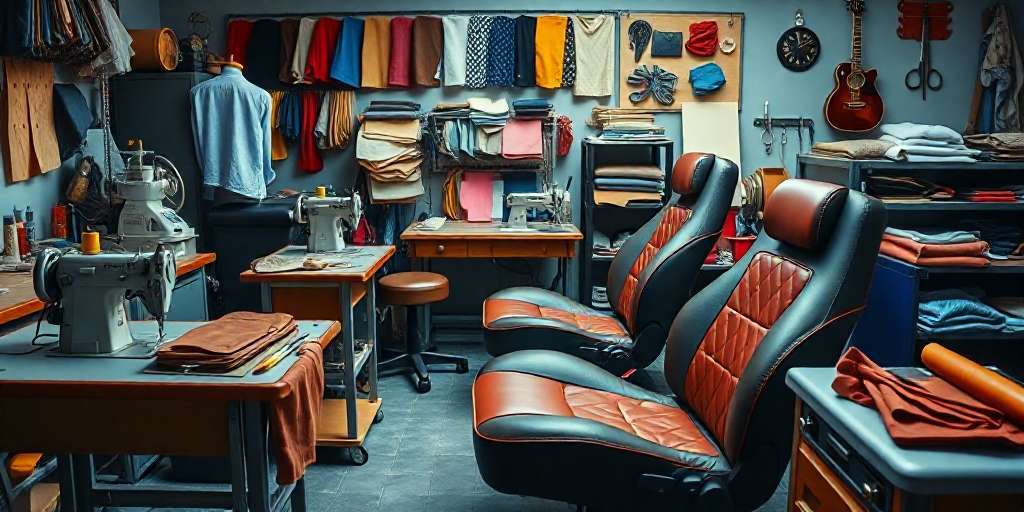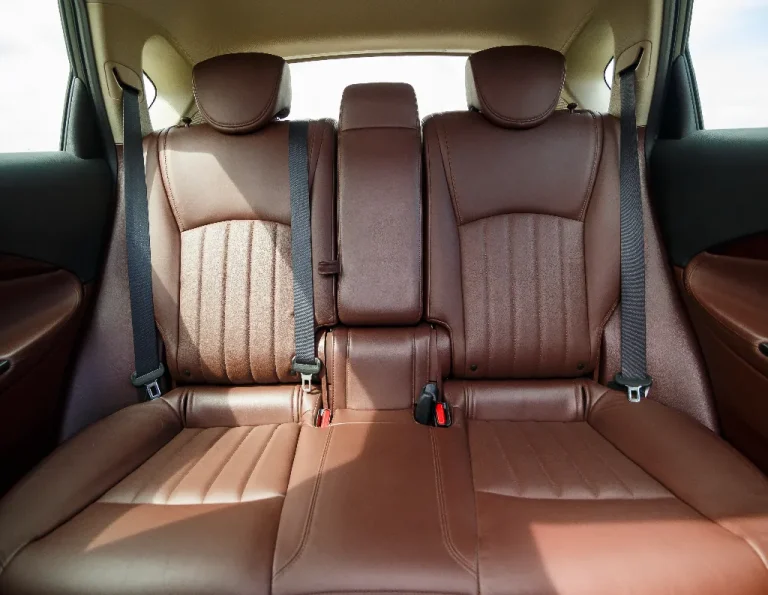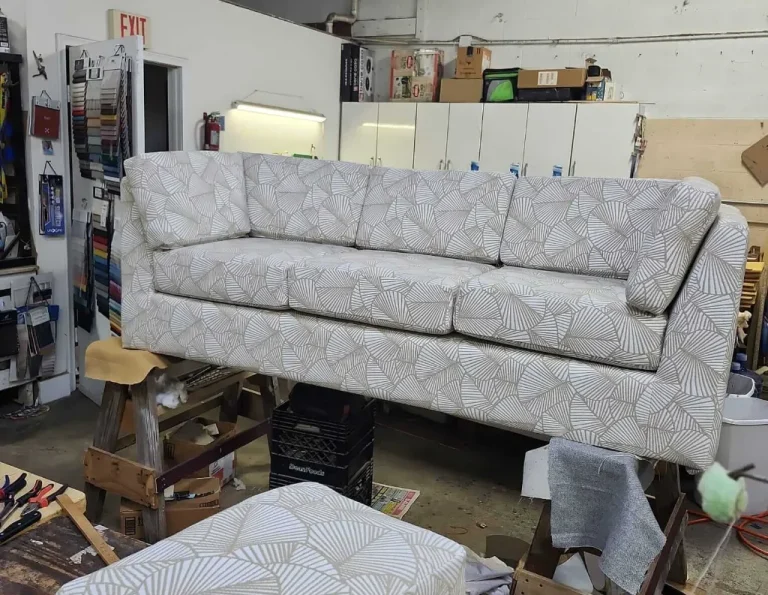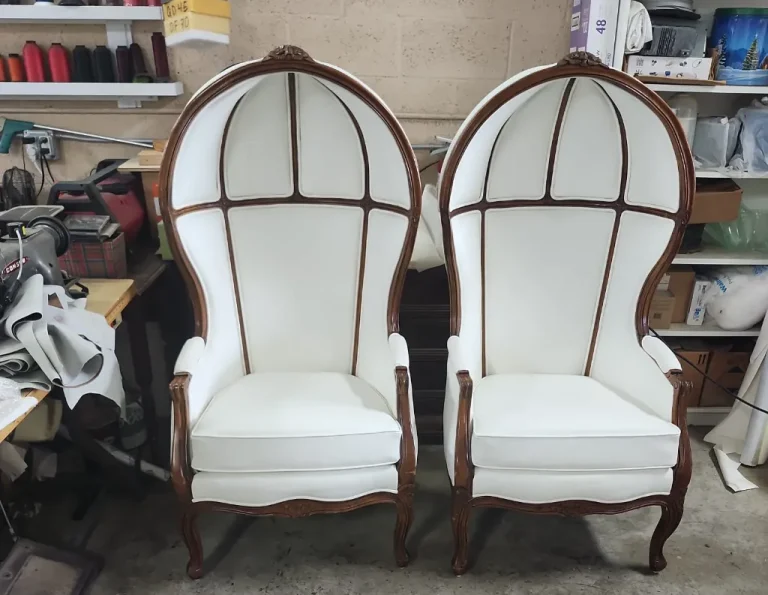Repair Auto Upholstery: Enhancing Your Vehicle’s Interior Comfort and Value
Repair Auto Upholstery: Enhancing Your Vehicle’s Interior Comfort and Value
Repairing auto upholstery is essential for maintaining both the comfort and appearance of a vehicle’s interior. Over time, upholstery can suffer from various types of damage due to everyday use and environmental factors. Understanding the types of materials and common issues can help in selecting appropriate repair methods. This article will explore the vital aspects of auto upholstery repair and provide insights into the repair process and available services.

Understanding Auto Upholstery Repair
Grasping the fundamentals of auto upholstery repair is essential for maintaining a vehicle’s appearance and comfort. Various types of damages can occur over time, affecting both the aesthetic and functional aspects of the interior.
Importance of Maintaining Your Vehicle’s Interior
Proper maintenance of a vehicle’s interior upholstery significantly influences the driving experience. Upholstery not only contributes to the overall comfort for the driver and passengers, but also plays a crucial role in the vehicle’s resale value. A well-kept interior can enhance the appeal of a car, making it more attractive to potential buyers.
Common Types of Damage in Car Upholstery
Identifying the specific types of damage that can occur in car upholstery is vital for effective repair strategies. Below are common issues faced by vehicle owners.
Wear and Tear: Identifying Key Signs
- Fading colors: Exposure to sunlight can dull the vibrancy of fabrics and leathers over time.
- Cracks in leather: Lack of proper conditioning can lead to desiccation, causing cracks and splits.
- Stains and spills: Food and beverages can create unsightly marks that penetrate upholstery fibers.
- Loose stitching: Regular usage can cause seams to unravel, compromising the integrity of the upholstery.
Foam Damage: Causes and Solutions
The foam underneath the upholstery serves as a vital support structure. Damaged foam can lead to an uncomfortable seating experience and reduced support.
- Compression: Prolonged weight can compress the foam, reducing its cushioning properties.
- Moisture damage: Water exposure can degrade foam materials, leading to mold growth and deterioration.
- Repair methods: Replacement is often the best option when foam has been significantly compromised. Layering additional foam can offer a temporary fix for less severe issues.
Types of Upholstery Materials
Understanding the different types of upholstery materials is crucial for determining the best care and repair methods. Two primary categories dominate the automotive upholstery market: leather and fabric. Each comes with distinct characteristics, advantages, and maintenance challenges.
Leather Upholstery: Care and Repair
Leather upholstery is favored for its elegant appearance and durability. However, proper care is essential to maintain its look and extend its life. Routine maintenance can prevent common issues that arise with leather.
Repair Techniques for Leather Seats
When addressing damage to leather seats, several techniques can be employed:
- Using leather repair kits, which often include color matching compounds and adhesives.
- Applying patches for visible tears or scuffs, using similar leather material.
- Utilizing leather conditioners to rejuvenate the texture and appearance.
Leather Restoration for an Enhanced Look
For more extensive damage, restoration can revive original aesthetics. This process may include:
- Deep cleaning with specialized leather cleaners to remove dirt and oils.
- Applying leather dye or pigment for consistent coloration.
- Sealing the restored leather with appropriate protective coats to prevent future wear.
Fabric Upholstery: Challenges and Solutions
Fabric upholstery is common in a variety of vehicles and offers a broader range of colors and textures. Nonetheless, it can present unique challenges, particularly when dealing with stains or wear and tear.
Repairing Cloth Seats: Tools and Tips
To effectively repair cloth upholstery, the following tools are important:
- Needle and thread for stitching small tears.
- Fabric glue for securing loose seams or patches.
- A lint roller or vacuum cleaner to remove debris before starting repairs.
Tips for repair include working gently to avoid further damage, and always ensuring that the repair material matches the original fabric for a seamless look.
Steam Cleaning and Maintenance
Regular cleaning is vital for fabric upholstery to maintain its appearance and longevity. Steam cleaning is an effective method, as it can:
- Deep clean fibers while sanitizing the surface.
- Remove even tough stains without damaging the material.
Routine maintenance practices, like prompt stain removal and protecting against frequent use, can help preserve fabric upholstery for a longer duration.
The Upholstery Repair Process
The repair process for upholstery involves a systematic approach to restore the aesthetic and functional aspects of a vehicle’s interior. By following a series of well-defined steps, repairs can be performed effectively to ensure lasting results.
Evaluating the Damage: The First Step
Before embarking on any repair, assessing the damage is crucial. This initial evaluation helps determine the extent of the issues present. Regularly checking for signs of wear and tear is essential, as timely responses can prevent further deterioration. Common concerns include:
- Tears and cuts in the fabric or leather
- Discoloration or staining
- Foam degradation or loss of support
Understanding these issues allows for informed decisions on the necessary repair techniques and materials to use.
Essential Tools and Materials
Having the right tools and materials is vital for any upholstery repair job. These supplies can significantly affect the quality and ease of the work performed.
The Right Tools for the Job
- Staple gun for securing materials
- Scissors or rotary cutters for cutting fabric
- Needles and thread designed specifically for upholstery
- Adhesives suitable for various materials, including fabric and leather
Utilizing appropriate tools ensures that tasks are completed efficiently and effectively, resulting in a polished finish.
Upholstery Repair Kits: Pros and Cons
Many choose to utilize repair kits available commercially. These kits often come with everything needed to tackle common upholstery repairs, making them a convenient option. However, several factors should be considered:
- Pros:
- Includes all essential tools and materials
- Cost-effective for minor repairs
- Cons:
- Limited options for material matching
- May not include specialized tools for complex repairs
Step-by-Step Repair Techniques
Executing the repair process can vary based on the type of damage and material. Following a structured approach can yield the best results.
Repairing Minor Tears and Holes
For small tears or holes, a straightforward patching technique can often suffice. The affected area should be cleaned and dried before applying a patch that matches the original material. After adhering the patch, sewing or using a fabric adhesive can help ensure lasting durability.
Replacing Worn Out Sections
When the damage is significant, replacing entire sections may be necessary. This process involves:
- Carefully removing the damaged section
- Measuring and cutting a new piece of upholstery to fit
- Securing the new piece with appropriate adhesives or fasteners
Taking precise measurements is key to achieving a seamless look. Attention to detail during this process enhances the overall appearance and functionality of the upholstery.
Professional Upholstery Repair Services
Utilizing professional upholstery repair services ensures high-quality workmanship and attention to detail that elevates the condition of vehicle interiors.
Finding Auto Upholstery Repair Near You
Identifying a reliable auto upholstery repair service can significantly affect the outcome of both aesthetics and durability. Local services are often well-versed in the specific needs of vehicles within the community, providing tailored solutions. To find reputable repair professionals:
- Search online for customer reviews and testimonials.
- Ask for recommendations from friends, family, or automotive forums.
- Visit local auto shops for referrals to upholstery specialists.
Exploring these avenues will help establish trust and ensure quality results in upholstery repair.
Benefits of Professional Services
Engaging a professional for upholstery repair offers numerous advantages that go beyond simple fixes. Their expertise can lead to improved outcomes.
Expert Craftsmanship and Quality
Professional services boast experienced craftsmen who utilize both traditional techniques and modern technology. This blend often results in a superior finish that is hard to replicate. These experts understand the nuances of various materials, ensuring that repairs blend seamlessly with the vehicle’s original upholstery. The meticulous attention to detail safeguards against issues that might worsen over time.
Long-Lasting Results for Your Vehicle
Investing in professional upholstery repair enhances not only appearance but functionality as well. Appropriate techniques and high-grade materials lead to durable repairs that withstand daily wear and tear. When performed by qualified technicians, upholstery repairs can hold up over extended periods, preserving both the comfort of the vehicle and its resale value. The longevity of these repairs ultimately contributes to a more pleasurable driving experience.
Custom upholstery options allow vehicle owners to express their unique style while enhancing comfort and functionality. By selecting personalized materials and designs, the interior of a car can be transformed into a reflection of individual taste.
Custom Upholstery Options
Personalizing Your Car’s Interior
Choosing custom upholstery can significantly impact how a car looks and feels. From colors and textures to patterns, there is a wealth of options available. Owners can select materials that match their lifestyle and preferences, whether it’s sporty, luxurious, or practical.
Custom Upholstery for Classic Cars
Classic cars often require special attention when it comes to upholstery. Custom pieces can be designed to replicate the original style while using modern materials that enhance durability and comfort. Upholsterers can create bespoke solutions that not only respect the car’s heritage but also ensure it meets contemporary standards of quality.
- Reproducing original designs for authenticity.
- Incorporating modern fabrics while maintaining classic aesthetics.
- Ensuring a perfect fit and finish that adds value to the vehicle.
Sustainable Materials and Trends
The automotive upholstery industry is witnessing a growing trend towards sustainability. More consumers are seeking eco-friendly materials that not only look great but are also better for the environment. Sustainable options are now more accessible, allowing for a blend of style and responsibility.
- Recycled fibers that offer durability without compromising aesthetics.
- Bamboo and hemp materials that provide natural beauty and comfort.
- Leathers that are produced with ethical practices.
These trends reflect a broader societal shift towards sustainability. By choosing eco-conscious upholstery, owners can contribute positively toward the environment while personalizing their vehicles. This choice aligns with the values of many contemporary consumers who prioritize both style and sustainability.
Maintenance Tips for Longevity
Proper maintenance is essential for preserving the quality and appearance of auto upholstery. Regular cleaning and careful upkeep can significantly enhance the life span of the materials and ensure a comfortable driving experience.
Regular Cleaning and Upkeep
Maintaining the cleanliness of upholstery can prevent dirt and stains from becoming embedded in the fabric or leather. This approach not only keeps the interior looking sharp but also helps to avoid more extensive repairs in the future.
- Regularly vacuum seats to remove crumbs, dust, and debris.
- Use upholstery cleaners specifically formulated for fabric or leather. These products ensure that the materials are treated gently, preventing damage.
- For fabric seats, consider using a fabric protector spray to create a barrier against spills and stains.
- Leather upholstery should be cleaned with a soft cloth and a specialized leather cleaner. Follow up with a conditioning product to maintain suppleness.
Preventative Measures to Reduce Wear
Implementing preventative measures can help minimize wear and tear on upholstery. These strategies are crucial for maintaining the appearance and comfort of the vehicle’s interior.
Protecting Against Future Damage
- Utilize seat covers to shield the upholstery from spills, punctures, and excessive sun exposure.
- Ensure that pets are secured during travel, as their claws can easily damage fabric and leather.
- Avoid leaving the vehicle parked in direct sunlight for prolonged periods, as UV rays can fade and crack upholstery.
Ensuring Comfort and Support
Encourage passengers to be mindful of their movements and refrain from leaning excessively against the seats.
Consider using seat cushions or ergonomic pads to enhance the comfort of the seats and reduce wear.
Regularly check and adjust seat settings to prevent undue stress on upholstery due to improper use.





